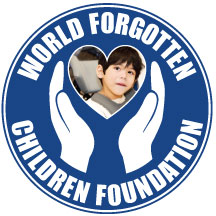
In a new report published on May 16 by the World Health Organization (WHO) and the United Nations International Children’s Emergency Fund (UNICEF), research revealed that more than 2.5 billion people need one or more assistive products, such as wheelchairs, spectacles and hearing aids. However, nearly one billion of them are denied access to these integral technologies, especially in low- and middle-income countries, where access has been known to be almost as low as 3% of the need of these technologies that many people rely on to go about their daily activities. “Assistive technology is a life changer. It opens the door to education for children with impairments, employment and social interaction for adults living with disabilities, and an independent life of dignity for older persons,” said WHO Director-General, Dr. Tedros Adhanom Ghebreyesus. “Denying people access to these life-changing tools is not only an infringement of human rights, it’s economically shortsighted. We call on all countries to fund and prioritize access to assistive technology and give everyone a chance to live up to their potential.”
Assistive technology is an overarching term for assistive products and related systems and services. These technologies enable the inclusion of people with disabilities, aging population and people with chronic conditions in social activities with their communities. Assistive products can help with a number of conditions that range from cognition and communication to mobility and self-care. These technologies are, undoubtedly, essential to the daily lives of many people of all ages. Often, the first step in child development includes the use of assistive technology when needed to promote the inclusion of children with disabilities and other chronic conditions with their peers. Access to assistive technology is described in the report as a human right, and a prerequisite for equal access to opportunities and participation in society. Although the need for assistive technology is rising, the majority of people who need it will not reap its benefits. Everyone is likely to require assistive technology at some point in their lives, especially as they age. It is paramount that borders do not dictate whether that person will have access to that technology (Source:WHO-UNICEF).
“Nearly 240 million children have disabilities. Denying children the right to the products they need to thrive doesn’t only har, individual children, it deprives families and their communities of everything they could contribute if their needs were met,” said UNICEF Executive Director Catherine Russell. “Without access to assistive technology, children with disabilities will continue to miss out on their education, continue to be at a greater risk of child labor and continue to be subjected to stigma and discrimination, undermining their confidence and wellbeing” (Source:WHO-UNICEF).
The report draws on data from 35 countries with nearly 330,000 individuals. Based on a self-reported, representative population surveys in 29 countries, WHO-UNICEF estimate that there are more than 2.5 billion who would benefit from one or more assistive technologies. As all trends point to an aging population and the increase of noncommunicable chronic diseases, it is likely that the number of people that require assistive technologies will increase. In fact,the number is likely to rise above 3.5 billion by 2050, according to the report. There are clear barriers that exist that result in inadequate access to assistive systems, such as lack of awareness and affordability, lack of services, inadequate product quality, range and quantity, and procurement and supply chain challenges. There are also social factors that affect one’s ability to gain access to assistive technologies, such as age and gender (Source:WHO-UNICEF).
The report presents ten recommendations intended as a framework to ensure that countries have the guidance they need to provide adequate assistive services. The first recommendation calls for improving access to assistive technology within all the major development sectors. The second recommendation relates to the assurance of the safety of the assistive products and their affordability. The third recommendation calls for diversifying and expansion of the workforce capacity. The fourth recommendation improves connections between people in the community by asking that users of assistive technologies and their families are actively involved. The fifth recommendation aims to end the stigma of using assistive technology and wants to increase public awareness. The sixth recommendation asks governments to invest in data and evidence-based policy. The seventh recommendation talks about the importance of investing in research and innovation. The eighth recommendation pushes for developing and investing in enabling environments, which are important for a user’s independence and comfort. The ninth recommendation advocates for the inclusion of assistive technologies in humanitarian responses. The tenth and final recommendation shines a light on the relevance of the report by urging international cooperation in providing technical and economic support for national efforts. These recommendations, taken together, provide a valuable framework for governments and organizations around the world on how to ensure the inclusion of people who depend on assistive technologies (Source:WHO-UNICEF).
Here in WFCF, one of our core missions is providing help for orphaned children with disabilities. Our past projects have helped children with disabilities all over the world, and we hope to continue our work. You, too, can help us achieve our mission by donating today!
Sources:
Global report on assistive technology - apps.who.int. (n.d.). Retrieved June 19, 2022, from https://apps.who.int/iris/bitstream/handle/10665/354357/9789240049451-eng.pdf?sequence=1
|



